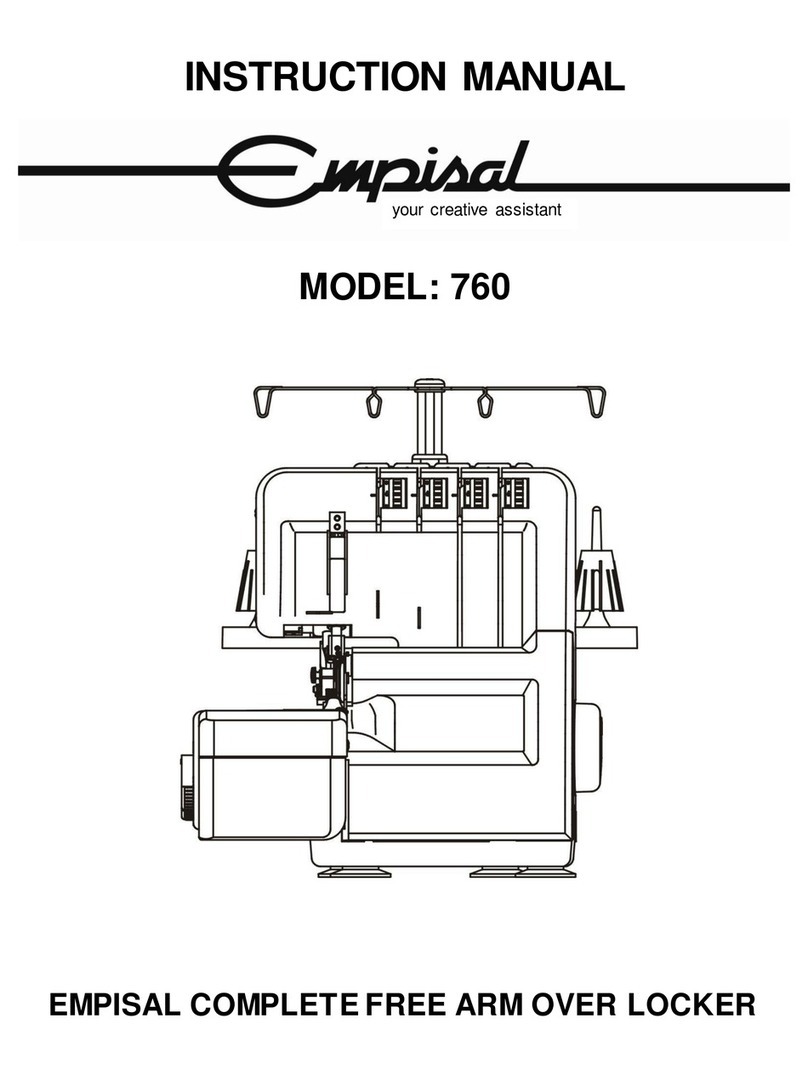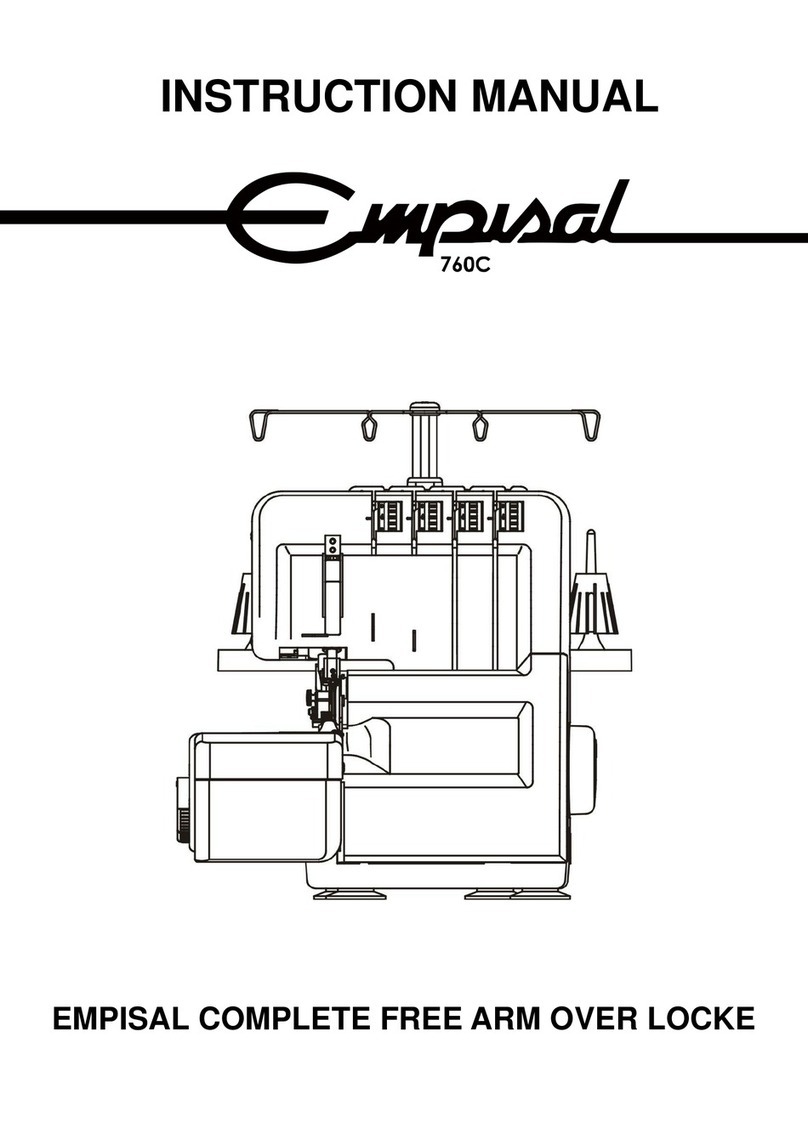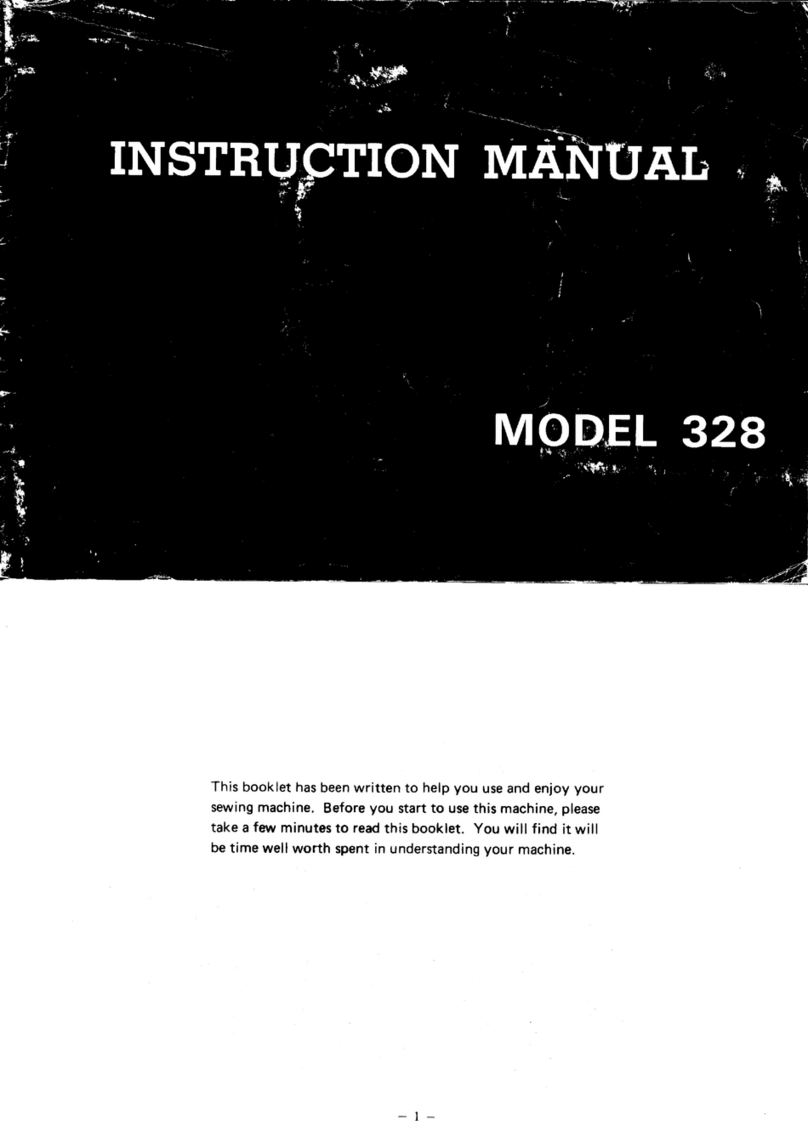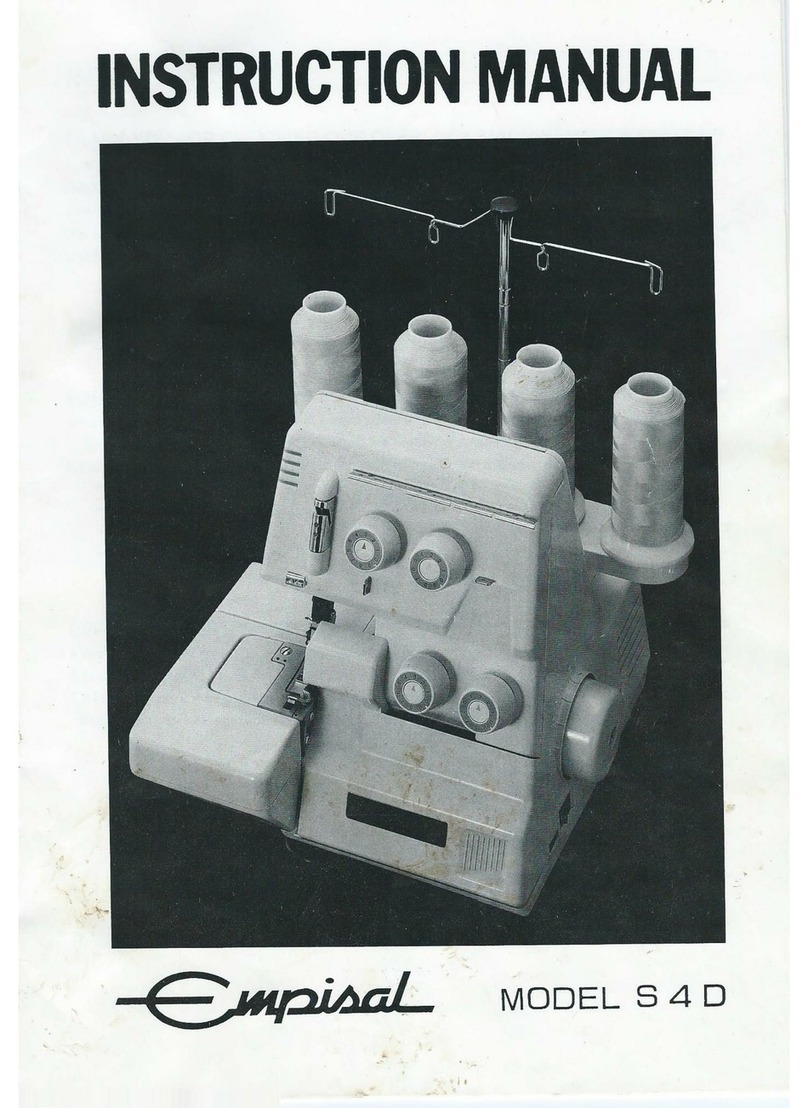Empisal EES10 User manual

Instruction Manual
Empisal Electronic Sewing EES10

Important
safety
instructions
I
When using an electrical appliance, basic safety should always be followed, including the
following: Read all instructions before using this sewing machine.
DANGER -To
r
educe
therisk of electricshock:
1. An appliance should never be left unattended when plugged in.
2. Always unplug this appliance from the electric outlet immediately after using and
before cleaning.
WARNING -To
r
educe
the risk of burns,
fire,
electric
shock,
or injury to
persons:
1. Read the instruction manual carefully before you use the machine.
2. Keep the instructions in a suitable place close to the machine and hand the
instruction manual over if you give the machine in to a third party.
3. Use the machine only in dry locations.
4. Never leave the machine unsupervised with children or elderly people to avoid any
damage or injury.
5. This appliance can be used by children aged from 8 years and above and persons with
reduced physical, sensory or mental capabilities or lack of experience and knowledge
if they have been given supervision or instruction concerning use of the appliance in a
safe way and understand the hazards involved.
6. Children shall not play with the appliance.
7. Cleaning and user maintenance should not be done by children without supervision.
8. Always switch off the machine if you carry out preparation for work (change the
needle, feed the yarn through the machine, change the footer, etc.).
9. Always unplug the machine if you carry out maintenance (oiling, cleaning).
10. Always unplug the machine if you leave it unattended, to avoid injury by
inadvertently switching on the machine.
11. Don't use the machine if it is in a wet or humid environment.
12.Never pull at the cord, always unplug the machine by gripping the plug.
13. If the LED lamp is damaged or broken, it must be replaced by the manufacturer or its
service agent, in order to avoid a hazard.
14.Never place anything on the foot controller.
15. Never use the machine if the air vents are blocked keep the air vents of the machine
and the foot controller free from dust, fusel and leftovers.
16.The machine must only be used with foot controller type C-8000.
17.The sound pressure level at normal operation is smaller than 75dB (A).
18. Do not dispose of electrical appliances as unsorted municipal waste, use separate
collection facilities.

Important
safety
instructions
II
19. Contact your local government authority for information regarding the collection
systems available.
20. If electrical appliances are disposed of in landfills or dumps, hazardous substances
can leak into the groundwater and get into the food chain, damaging your health and
well-being.
21. When replacing old appliances with new ones, the retailer is legally obligated to take
back your old appliance for disposal at least for free of charge.
22.Children being supervised are not to play with the appliance.
SAVE
THESE INSTRUCTIONS
This sewing machine is intended for household use only.

Contents
PRINCIPAL
PARTS OF THE MACHINE ..........................................................................................................1
ACCESSORIES
......................................................................................................................................................2
CONNECTING
THE MACHINE TO THE POWER SOURCE ......................................................................3
Connecting the machine .....................................................................................................................................3
STARTING SEWING ............................................................................................................................................4
Foot control.........................................................................................................................................................4
CHANGING THE NEEDLE STOP
POSITION
.................................................................................................4
CHANGING THE PRESSER FOOT ...................................................................................................................5
TYPE OF PRESSER FOOT CHART ..................................................................................................................5
REPLACING
THE NEEDLE ...............................................................................................................................6
MATCHING
NEEDLE/ FABRIC/
THREAD
......................................................................................................6
WINDING THE BOBBIN .....................................................................................................................................7
Bobbin winding ..................................................................................................................................................7
INSERTING
THE BOBBIN..................................................................................................................................8
THREADING THE UPPER
THREAD
................................................................................................................9
USING THE NEEDLE
THREADER
.................................................................................................................10
THREAD
TENSION
.............................................................................................................................................11
RAISING UP THE LOWER THREAD .............................................................................................................12
CUTTING THE THREAD ..................................................................................................................................12
TWO-STEP PRESSER FOOT
LIFTER
............................................................................................................13
TO RAISE OR DROP THE FEED DOGS ........................................................................................................13
BUTTONS OF
MACHINE
.............................................................................................................................14-15
Reverse/Auto-stop button (1) ...........................................................................................................................14
Mode selection button (2).................................................................................................................................14
Stitch length adjustment button (3)..................................................................................................................15
Stitch width adjustment button (4)...................................................................................................................15
PATTERN
CHAR
T
...............................................................................................................................................16
USEFUL SKILLS .................................................................................................................................................17
Sewing corners..................................................................................................................................................17
Reverse..............................................................................................................................................................17
Installing the Removable Accessory Storage...................................................................................................17
Free arm............................................................................................................................................................17
Sewing on the heavy fabric..............................................................................................................................18
STRAIGHT
STITCHES
AND NEEDLE
POSITION
......................................................................................19
ZIGZAG
STITCHES
...........................................................................................................................................19
STRETCH
STITCH .............................................................................................................................................20
OVERCASTING
STITCHES
..............................................................................................................................21
BLIND HEM/
LINGERIE
STITCH ..................................................................................................................22
BUTTON SEWING ..............................................................................................................................................23
BUTTONHOLE
STITCHING
.......................................................................................................................24-26
ZIPPER
INSERTION
.....................................................................................................................................27-28
Inserting a centered zipper ...............................................................................................................................27
Inserting a side zipper.......................................................................................................................................28
SATIN STITCH
SEWING
...................................................................................................................................29
SCALLOP
STITCH
..............................................................................................................................................29
SMOCKING
..........................................................................................................................................................30
FAGOTING
...........................................................................................................................................................31
PATCHWORK STITCHING
..............................................................................................................................31
TWIN NEEDLE ....................................................................................................................................................32
WARNING FUNCTIONS ....................................................................................................................................33
Warning beeping sound ....................................................................................................................................33
Return bobbin winder spindle to left ...............................................................................................................33
The sewing machine is in trouble ....................................................................................................................33
MAINTENANCE ..................................................................................................................................................34
Cleaning the sewing machine surface..............................................................................................................34
Cleaning the hook.............................................................................................................................................34
TROUBLE
SHOOTING
GUIDE ..................................................................................................................35-36
III

1
Principal
parts of the
machine
Tension dial
Bobbin winder
spindle
Reverse/ Auto-stop button
Thread cutter
Buttonhole lever
Auto needle threader
Bobbin cover plate
Sewing table and
accessory box
Digital display
screen
Stitch width
adjustment buttons
Stitch length
adjustment buttons
Mode
selection
button
Bobbin winder stopper
Hole for second spool pin
Horizontal spool pin Bobbin thread guide
Upper thread guide
Hand wheel
Main power switch
Power cord
Handle
Presser foot lifter
Drop feed lever
Foot controller connector
Table of contents
Other Empisal Sewing Machine manuals
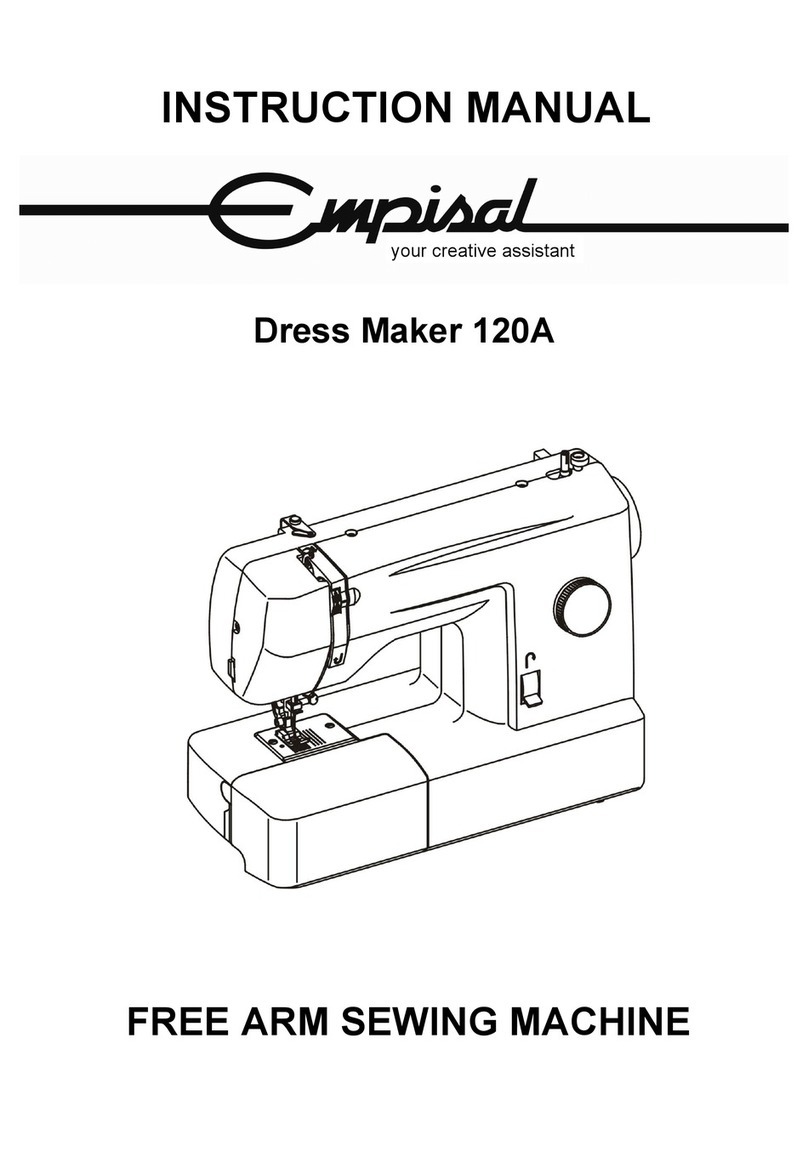
Empisal
Empisal Dress Maker 120A User manual
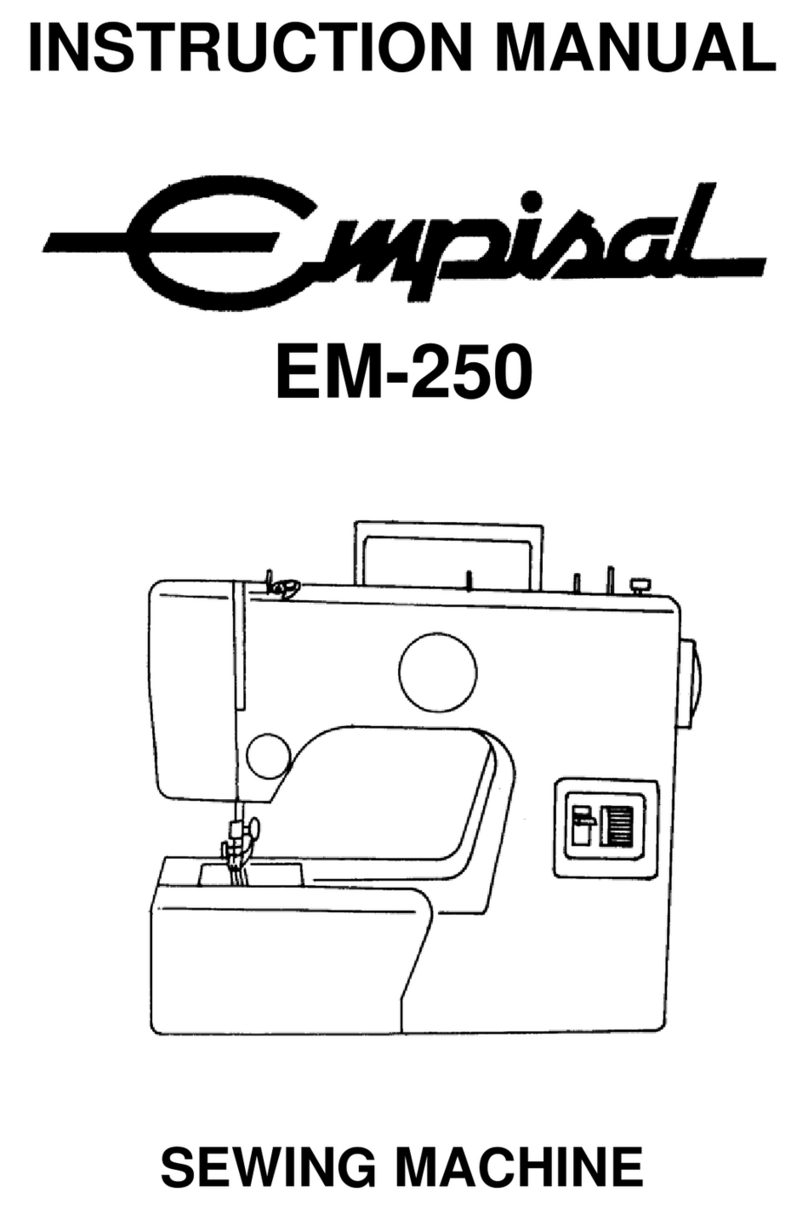
Empisal
Empisal em-250 User manual
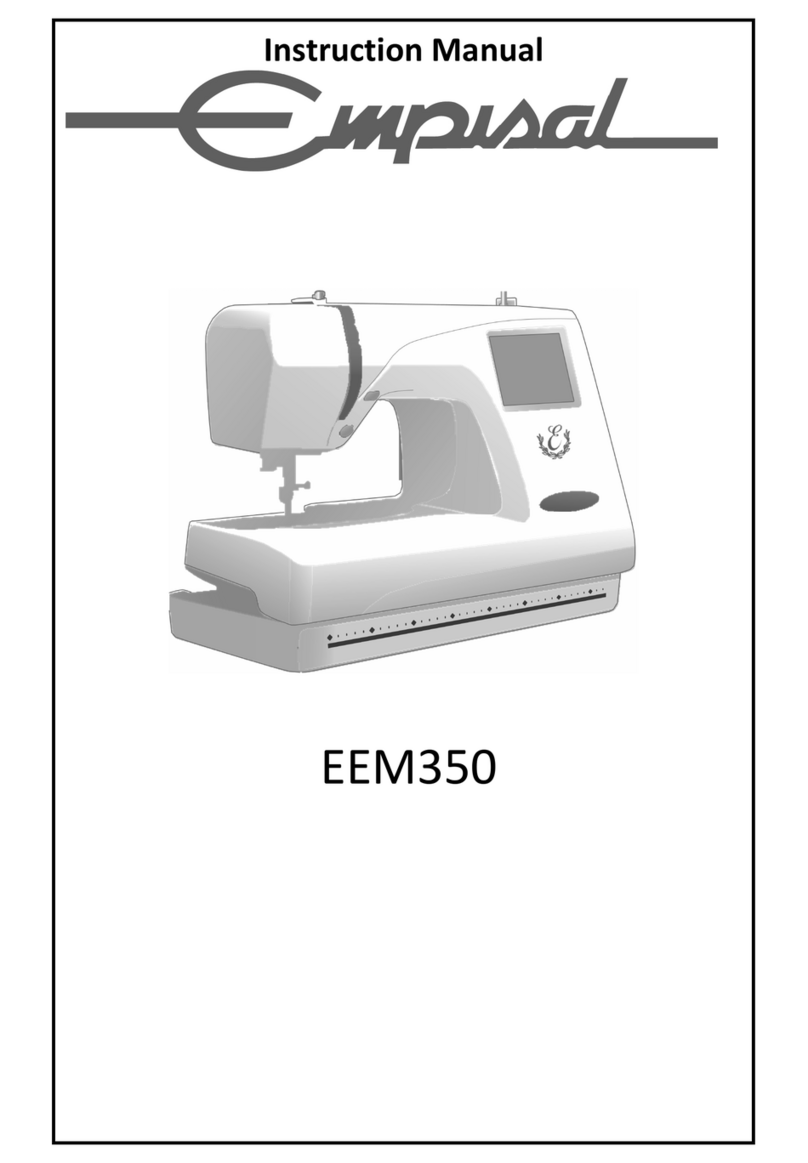
Empisal
Empisal EEM350 User manual
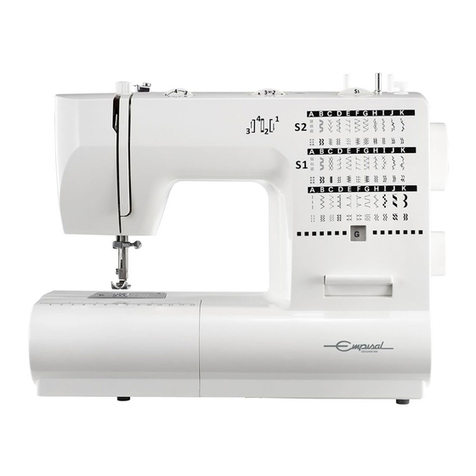
Empisal
Empisal Designer 800 User manual

Empisal
Empisal EEMC220 User manual
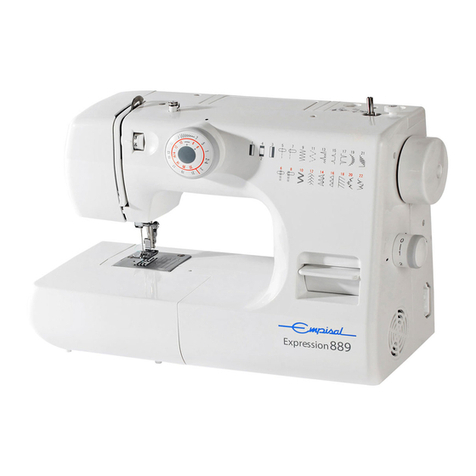
Empisal
Empisal Expression 889 User manual
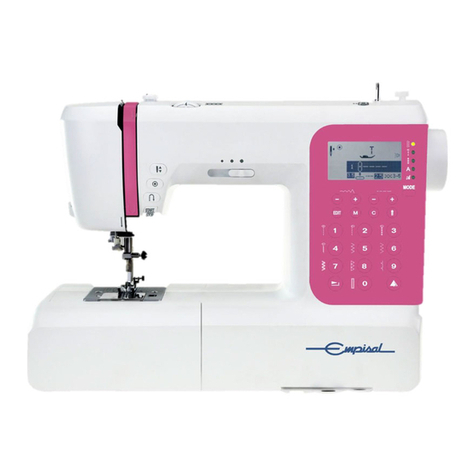
Empisal
Empisal EES50 User manual

Empisal
Empisal Dress Maker 270D User manual
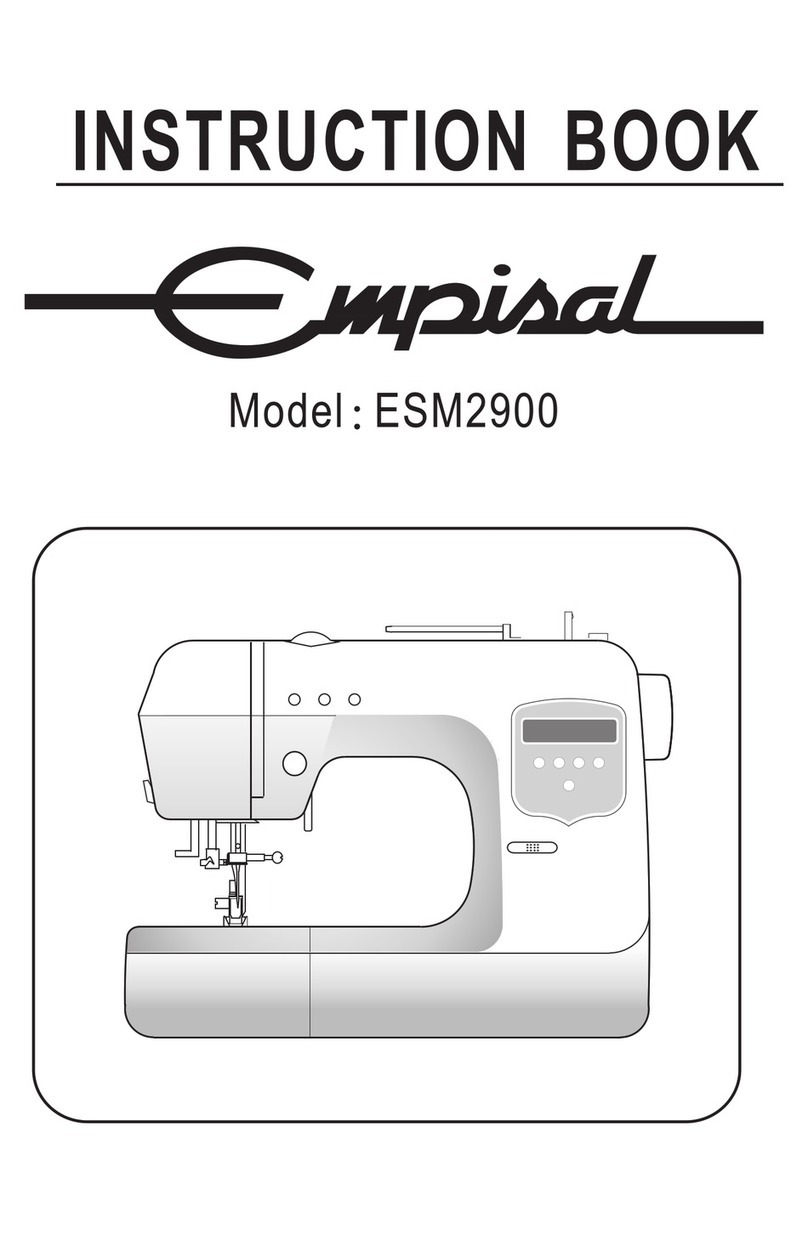
Empisal
Empisal ESM2900 User manual
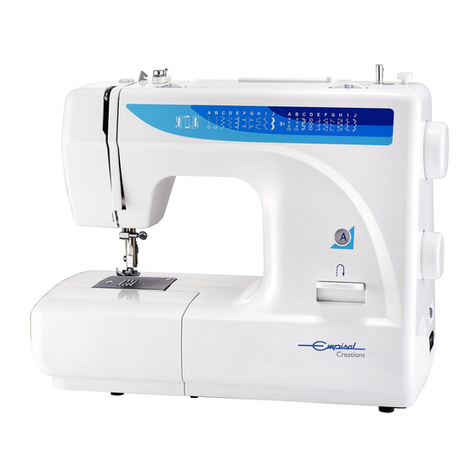
Empisal
Empisal creations User manual
